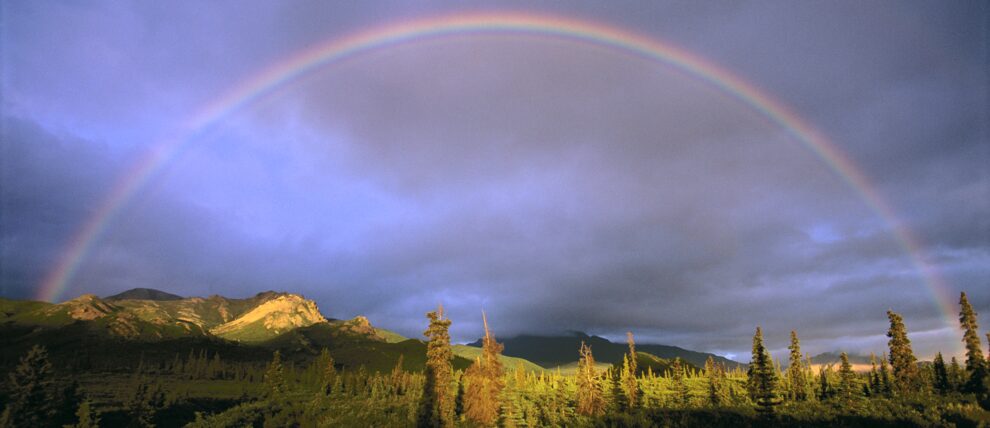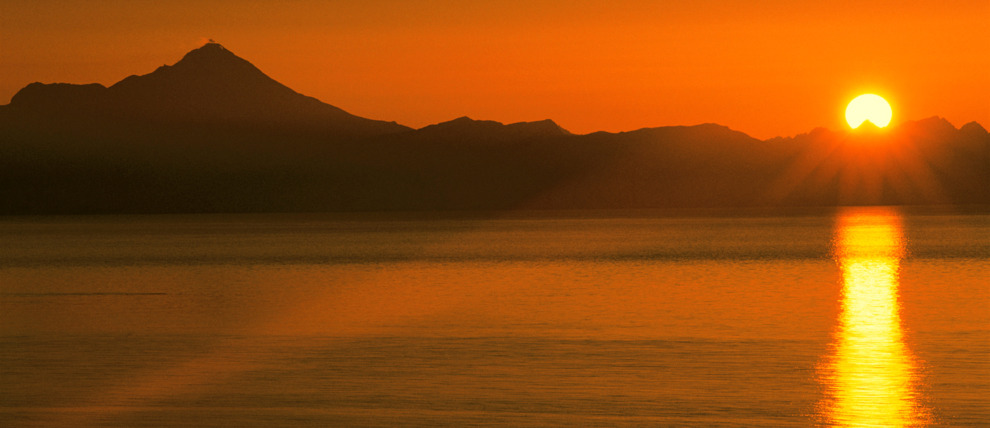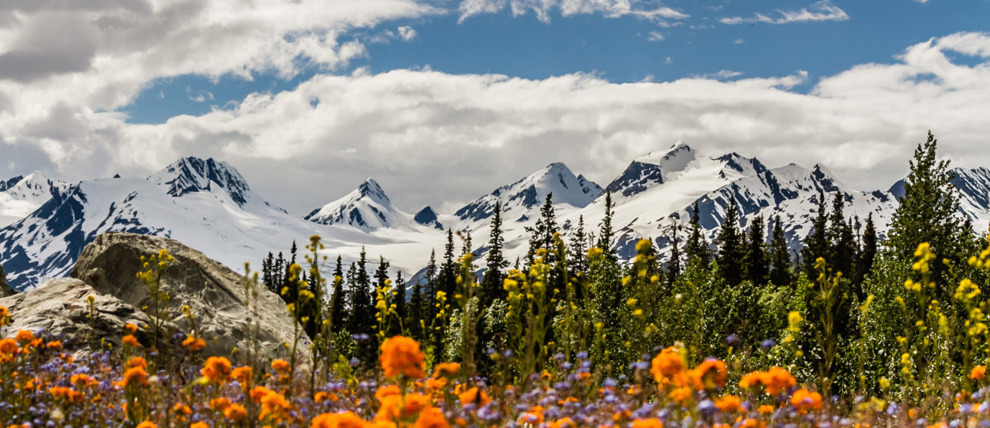What will the weather be like in Alaska?
Alaska's climate is as diverse as its landscapes, so the weather you'll experience during the summer travel season largely depends on when you are here and what regions you travel through.
Southcentral Alaska Weather
Southcentral is the most geographically varied region of the state, spanning from the coastal communities of Seward and Homer, through mountain ranges, and into spruce forests around Talkeetna. Coastal Southcentral areas have a similar climate to Southeast Alaska. The farther north you travel, the drier and warmer the weather gets.
- Anchorage, Alaska's largest city, sees high temps climb from the mid-50s in May to the mid-60s in June, July, and August. Weather is often clearer and dryer in May and June, then turns drizzly through August and September. Nighttime darkness returns in September and temps can dip into the low 40s.
Interior Alaska Weather
Interior Alaska is usually the warmest part of the state in summer. This is particularly the case in Fairbanks, which can see highs in the 80s in June and July. July is the rainier month for Fairbanks, but even so, the area typically only gets two total inches (as compared to more than eight inches common in Juneau in August).
- Just as quickly as the Interior warms up, it cools. Travelers there in September are likely to wake up to frosty mornings and dazzling fall colors.
Denali National Park Weather
Denali National Park straddles both Southcentral and the Interior, but because of the massive topography of the Alaska Range, the weather there is quite unique. When you're traveling near the park, you'll likely hear tour guides or locals say that the "mountain makes its own weather." It can be clear and sunny in Talkeetna, but just 50 miles away, Denali will be shrouded in clouds.
- These mountain weather systems typically grow throughout the day as warm air at lower elevations builds up, pushes into cold air around the peaks, and creates clouds. The best time to catch a glimpse of Denali is often in the early morning.
Southeast Alaska Weather
Looking at a map of Alaska, the Southeast encompasses the slim stretch of islands and ragged coastline between Ketchikan and Yakutat. If you are cruising in Alaska, this is your playground. The ocean waters keep land temperatures a moderate 50 to 60 degrees during the summer. The Coastal Range acts like a catcher's mitt for moisture blowing in from the Pacific Ocean, contributing to the region's rainy, misty weather. Much of the Southeast coast is a temperate rainforest. With an average three inches of rain, May and June are the driest months in this region.
- In general, expect intermittent days of cloud cover that often hangs low along the green coastline (and makes for particularly beautiful photos).
The Bottom Line
Overall, the weather in Alaska can be somewhat unpredictable, but it's all part of what makes traveling here so dynamic. Pack layers, a warm jacket, and a dependable raincoat so that you can be prepared for any weather Alaska has to offer.
More Like This: If you would like to see charts of temperatures by region and season, or information on the amount of daylight, you can also visit our weather and daylight page.



